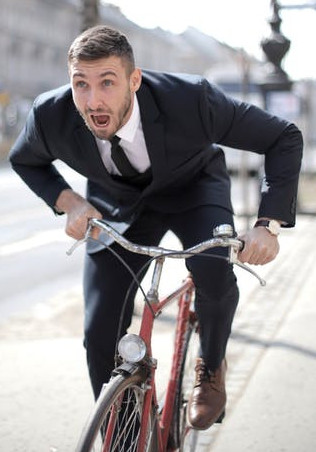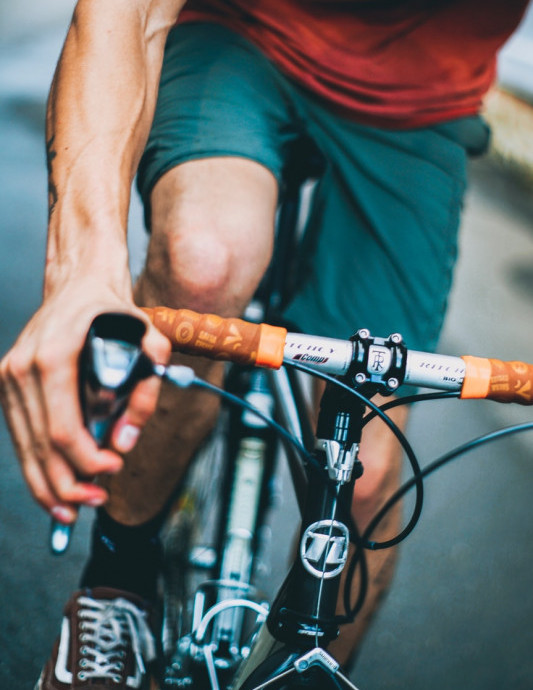
Do cycling and erectile dysfunction go together. Let’s look at these issues and some of the other ones down there to watch out for.
So Does Cycling And Erectile Dysfunction Go Hand In Hand?
No matter what you may have heard from well-meaning friends and family, cycling does not cause erectile dysfunction.
This was proven in a study of more than 5 282 male cyclists ranging in age from 16 to 88 published in the July 2014 issue of the Journal of Men’s Health.
It was found that there was no connection found between cycling and erectile dysfunction (or even infertility) no matter how many miles and/or hours the men cycled each week—even among those cranking out more than 8.5 hours or 320km a week in the saddle.
That, of course, is great news, but it’s not to say you’re 100-percent immune from cycling pain and other problems below the belt.
Other problems could include bouts of nerve damage, numbness, and other more superficial issues like saddle sores.
Over the years men have been more educated in understanding the importance of the choice of bicycle saddle and fit, but there is still the question of what is acceptable discomfort and what is not?
Let’s look at some of the problems that could occur and how to avoid them.
Prostate Problems
The connection between cycling and prostate-specific antigen (PSA) levels, which are often used as a key test of possible prostate problems, is a subject of much debate.
It looks as though long-distance cycling could temporarily elevate PSA levels. So it is recommended that men may want to avoid long rides before their regularly scheduled prostate exams as to not get an artificially elevated result.
It is speculated that the saddle and vibration cause the PSA rise, but that it was not a cause for concern because it returned to normal quickly afterward.
Like other saddle issues, you can minimize or even eliminate this one with proper saddle adjustment and bike fit. It just shows that saddle choice and overall fit is crucial to urinary and sexual health, and to avoid going numb down there.
Numb Genitals
Genital numbness is never a good thing. Some cyclists can ride with nearly any saddle all day and not experience genital numbness, because their nerves and veins are buried under many layers of tissue and aren’t affected.
Others need to be more careful, but the main thing to realize is that no amount of numbness is okay. This means that nerves are being compressed which is not good as the blood can’t flow. So if you ignore this, you could do some serious long term damage.
With repeated numbness, your veins and arteries will eventually collapse and scar internally.
There are so many padded cycling shorts and good bicycle saddles with grooves and cutouts which can reduce pressure on the perineum, so it is important to let a professional fit you out as everyone is built differently.
The majority of your weight in the saddle should be resting on the sitting bones (the hard bones you feel when you sit down) or on the pelvic bones further forward, depending on how aggressively you ride and how aero your position is. But remember weight should never be on your perineum.
Also watch the height of your handlebars, as if you are too stretched out, you could put more pressure on the soft tissues.
Saddle Sores
“Saddlesore” is a bucket term for everything from chafing, infected hair follicles (folliculitis), and open ulcerations. All of these have the potential to be pretty painful.
Like many saddle woes, the right saddle and proper bike fit can go a long way in preventing these maladies. Proper hygiene also helps.
Other preventative steps which can help include:
Manscaping:
Don’t shave too close to the speedo line, because you may open the door for razor bump, infected follicles, and ingrown hairs. If you are prone to these ailments, apply a light layer of antibiotic ointment to this area after shaving.
Lubricate:
Chamois cream is great to reduce friction between your skin and your shorts. You can even rub some on the chamois itself as well as your skin for added protection. Make sure that your chamois doesn’t have seams and that they fit well so they don’t rub against your skin.
If you have close-set thighs and battle with chafing as the side of the saddle rubs on your skin, try an anti-chafing gel. This is especially important if you are a triathlete and get onto your bike wet after a swim.
Should a sore pop up, you can treat it yourself with healing, protective ointment, which often contains tea tree oil. Moleskin with an area cut out around the sore can also help keep pressure off the sore itself, so it’s less painful.
Testicular Pain
Cycling shouldn’t become a pain for your family jewels.
If you feel any soreness, aches, or sensitivity in your testicles during or after a ride, something is amiss and it is normally due to an ill-fitting saddle or the fit of the bike.
Another problem can come up with the pudendal nerve that runs between your genitals through your perineum to your anus.
Compressing that nerve can cause pain in the scrotum, penis, and/or perineum. To avoid it, follow the same steps you would to prevent and alleviate genital numbness.
So in conclusion, when cycling, remember to change position often while riding by adding bar ends to handlebars so you can change the height of your body. Sitting in a more upright position when you can is definitely more prostate friendly.
Be sure to wear padded cycling shorts when you ride and make sure your saddle is the right fit for you.
So hoping this article has allayed your fears about cycling and erectile dysfunction. You can continue to enjoy your cycling well into your advanced years, providing you learn to look out for yourself.
